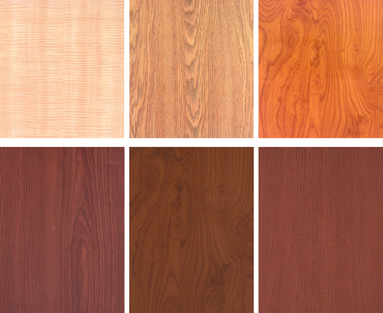Next time you walk into any house, take this challenge and see how long it takes you to find wood somewhere.
If it takes you longer than 3 seconds you must be in a grass hut or cement shack. Wood is so widely used in construction and decorating today that it’s part of basically every room.

From flooring, to furniture to cabinets and countertops to the swing set the kids play on out back.
There’s a reason for that. Wood is one of the most versatile, reliable, affordable AND beautiful materials available. The trick is that so many types of wood are available today that sometimes it feels like you need to take a college course to understand them.
No worries…we’re here to help you.
Our wood species guide will help you understand the differences in all the woods that are offered. You’ll learn differences in look, color, durability, grain pattern and then some. You’re bound to find the one you’ll love and want in your home. If you want an education in-person, come visit out showroom and see them for yourself.
In the mean time, here are some key points of difference.
Some woods are harder than others
As you may have guessed, some wood species are naturally more durable than others, which also means they may be able to take more abuse without showing it. You might assume that hardwoods are harder than softwoods, as the name implies, but that’s not always the case. Softwood just means that the wood comes from a gymnosperm tree (typically those that don’t lose their leaves), while hardwood comes from angiosperm trees such as maple or cherry. The Janka hardness table is a great tool to help you find out how some woods rank against others.
Natural variations in wood
While many companies dealing with wood try their best to keep wood color and patterns similar throughout a project, it is inevitable that your wood will vary at least slightly from piece to piece. Even two pieces of wood from the same species will differ somewhat from each other. This is because environmental factors affect the look of the wood in many ways – from geographical location, to soil, climate, insect and animal damage, knots and more.
When it comes to finishing woods, via stain or paint, each wood specie has known characteristics when it comes to natural color and grain patterns. As mentioned earlier, they will still vary from piece to piece, so keep that in mind. Some species, like oak, are known for their open grain pattern, while others like maple can vary from straight to wavy and curly all within the same piece. Some woods take stains more uniformly than others, and many can change even more as they age in your home (for instance, cherry is known to get darker as it "mellows out"). It is important to talk with your supplier of wood about your wood options, grain patterns, and how they’ll behave based on your plans.
If you’re planning to update your kitchen or bathroom cabinets in the Chicagoland area, we’d love to talk with you about your options. Contact us for a no pressure conversation today.

